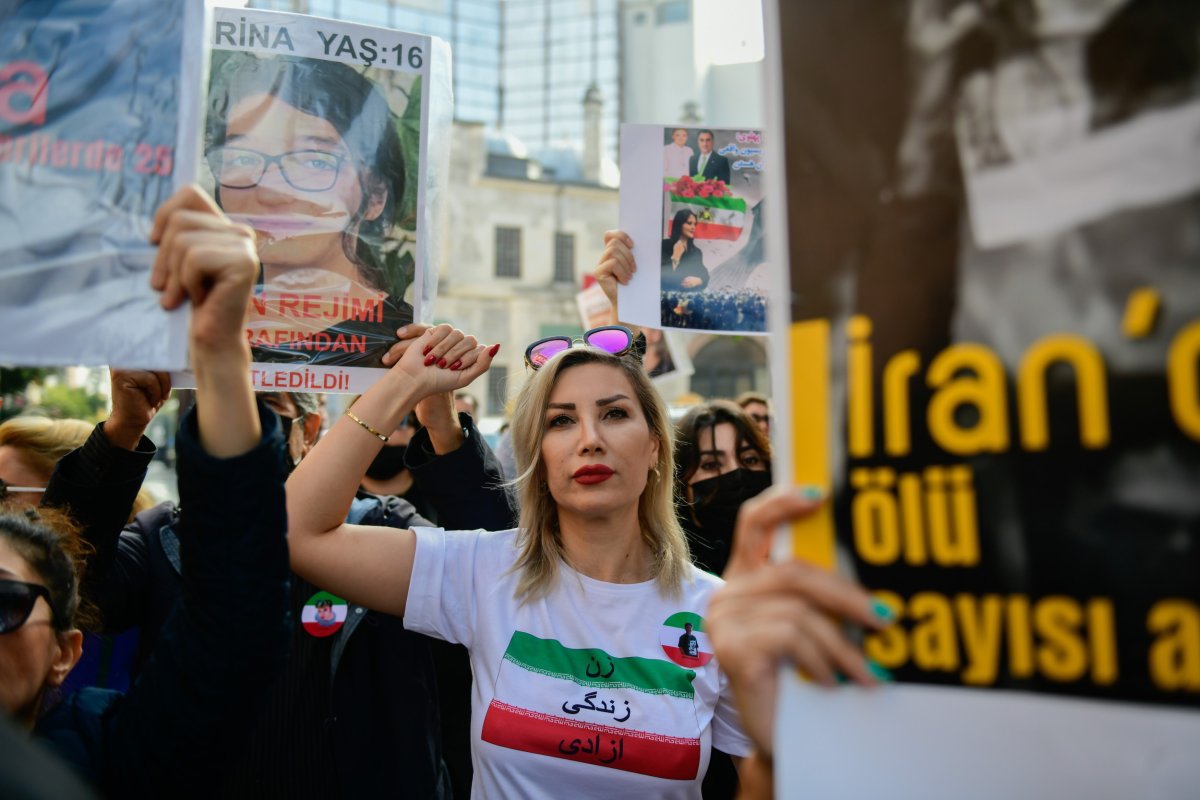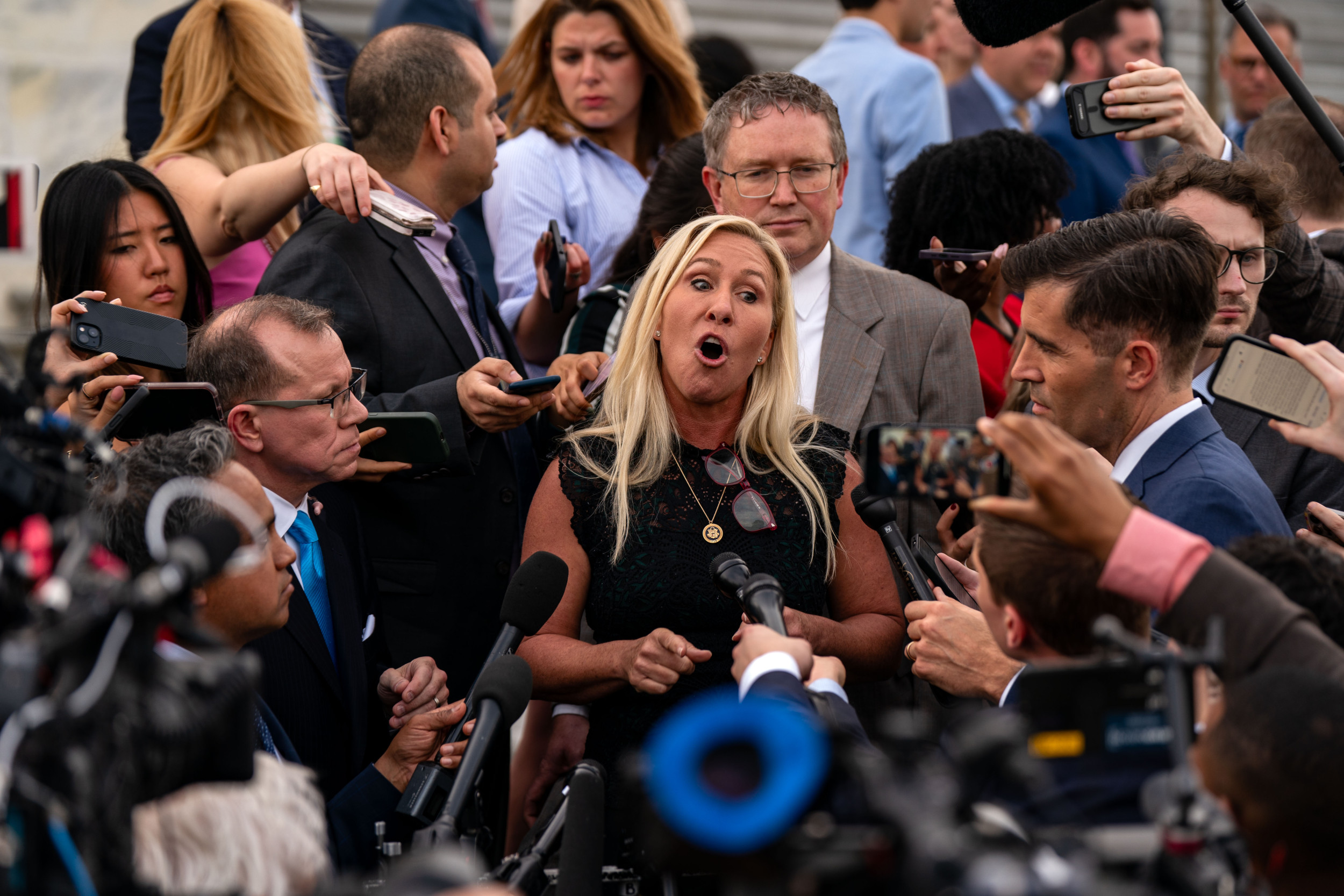Four months after the funeral of Mahsa "Jina" Amini, the Iranian government continues its bloody battle with mass protests ignited in the wake of her death.
The 22-year-old woman fell into a coma and died in September 2022 after she was apprehended by members of Iran's notorious Gasht-e Ershad—more colloquially know as the "morality police"—for not wearing her headscarf in accordance with the country's strict Islamic code. Protests were swift and protesters incensed. Through October, November and December 2022 hundreds of thousands of people in cities across Iran raged against the casual brutality of the regime. Each passing day brought more anger, more strikes and more determination.
In a country that works hard to control the release of information beyond its own borders, audiences around the world saw signs that a regime founded on revolution might now be vulnerable to one itself.
Then, on December 4, as dozens of videos showing protesters standing up to—and in some cases actively goading—Iran's rank-and-file Islamic elite spread across social media, news emerged that the regime had decided to abolish its morality police.
The news felt like an inevitable step. A necessary concession from under-pressure clerics fearful the protests were loosening their grip on public order. It was picked up by reputable news outlets, many going as far as describing it as a victory for protesters whose steadfast resolve had not allowed a violent government crackdown to stop them. Even in Iranian circles, some hesitantly welcomed the news.
The truth however was not so simple.

Iran's Red Herring?
Some questioned the timing of the vague announcement regarding the morality police by Iran's attorney general, Mohammad Jafar Montazeri at a meeting to address the demonstrations.
"The morality police have been shut down from where they were set up," the cleric had said in response to a question from a journalist, adding the police "had nothing to do with the judiciary" and "the judiciary would continue to monitor behavioral actions at the community level."
For Haani (not her real name), a civil servant by day who takes to Tehran's streets each night to add her own voice to the protesters cacophony of cries, chants and booming calls of "death to the regime," the news sat uncomfortably. Having had her own run-ins with the morality police, she wondered whether these ideologically determined men would be easily dissuaded.
"They would call and ask me to come collect my younger sister whom they had arrested because of the color of her attire," she told Newsweek.
Haani would have to give written assurance her younger sister Homa (also not her real name) would dress modestly in future.
"Four times I guaranteed she wouldn't be back," Haani recalls.
Finally, in hopes of living more safely and better prospects, Homa emigrated to Canada. When calling home, she would ease her homesickness by telling her sister how much she hated those morality police vans.
But the apparent policy change came only days after the UN Human Rights Council established a special mechanism to probe human rights violations against protesters. Diaspora activists cried foul, saying Tehran had "fixed" the timing of the announcement, which was a PR stunt to divert attention while the regime began to quietly execute protesters. So far four men are known to have been executed since the protests began following brief trials. More have been sentenced, while over 500 people have been killed during street protests.
And while reports circulated that there were fewer morality police patrols on the streets of Tehran, locals reported that their numbers had increased outside the capital. Shopping malls and even internal flights that had decided to relax their hijab regulations were met with swift fines and closures. The patrols had not disappeared, they seemingly had just gone undercover—away from prying eyes and pesky cameras.
The timing of the news about the morality police also seemed to be aimed at diverting attention away from nationwide strikes planned for December 5, 6 and 7 across Iran.
For Haani, the reduced number of patrols in her home city did nothing to convince her the regime had changed its ways.
"Even if they are gone for good, this won't change anything for the protesters," she said. "We will not fall for these political games."
"It is the basic founding principle of the regime and the system people have a problem with," Haani said.
She said this has been the case for years now and has been felt stronger with the worsening economic hardship brought on by global sanctions.
"It is a lack of prospect and a deep hopelessness even for those of us who hold civil jobs in Iran," Haani said.
She has witnessed peers and colleagues holding down several jobs to pay for basic expenses, and friends moving away from the city center to be able to afford to live.

The Revolution After The Revolution
For women who witnessed both sides of the 1979 Iranian Revolution, the mandatory hijab and the punishment for not observing it became a reality, not in its immediate aftermath but in 1983 when obligatory veiling was signed into law and became punishable by fines, floggings and imprisonments.
Many still recall the pre-revolution days when they could enjoy a day at the beach wearing bikinis by the Caspian Sea while their more conservative peers wore headscarves and chaddors, sitting a few meters away. In the aftermath of the establishment of the Islamic Republic, women were monitored by different incarnations and re-incarnations of the morality police and subjected to taunts such as "Ya roosari ya toosari," Farsi for "wear a scarf or be smacked on the head."
In the years that followed the revolution, there were brief periods of relief from the pressure in the form of "reformist" governments but with every subsequent conservative spell, the pressure mounted anew. When hardliner Ebrahim Raisi took over as president in 2021, the number of morality police vans significantly increased.
Some Iranian women born after 1979 have experienced dual cultures, repressive at home and more liberal abroad, experienced through travel and the growth of social media, bringing alternative lifestyles and greater choices into their homes via their cell phones. These women had inherited an oppressive system they had not asked for but access to social media enabled them to see how their prospects set them apart from their peers around the world. It also presents an alternative reality of how Iran could be had it not become an Islamist theocratic regime.
Hopelessness, even in the face of reform cycles had made them eye each glimpse of improvement with "total distrust," Haani added.
"It is just a show," said 40-year-old Arash (again, not his real name), an aspiring photographer, who runs a cell phone repair shop in northeast Iran with his cousin to make ends meet. "If they are now less sensitive to the way women are observing hijab, it is only because they don't have enough forces to man the morality police."
The 40 year old, whose photos have made it to international galleries and magazines, has been toying with the idea of emigrating for nearly 15 years, but has so far resisted the temptation because of his "cultural background and financial situation."
"I could not buy the magazines that had published my photos, could not attend the gallery openings exhibiting them," he said. Not being able to make it in Tehran, he has fallen back on repairing cell phones.
Arash said he has witnessed female friends being taken away in vans for wearing incorrect attire. But "now they won't go without a fight," a notable change he says that started even before the death of Amini.
"The 2019 (Aban) protests was the turning point," Arash said. 'It was enough. People had to deal with economic hardship, having someone tell them how to dress was just the last straw."
And why is the hijab such a focal point for the regime, a "red line" that needs to be policed so vigorously?
"If the regime relaxes its stance on the hijab, it is essentially casting its own foundation and layers of repression into question," Arash said. "Religion and the hijab, they are just tools of repression."
Signs of apparent reform by the Iranian regime in the aftermath of Amini's death did not stop Iran being expelled from the UN's Commission on the Status of Women in December 2022. And while Tehran has continued its crackdown on protests with public executions of protesters and imprisonment of activists, the dissent continues to simmer—ready to boil over at a moment's notice.
Uncommon Knowledge
Newsweek is committed to challenging conventional wisdom and finding connections in the search for common ground.
Newsweek is committed to challenging conventional wisdom and finding connections in the search for common ground.
About the writer
To read how Newsweek uses AI as a newsroom tool, Click here.






